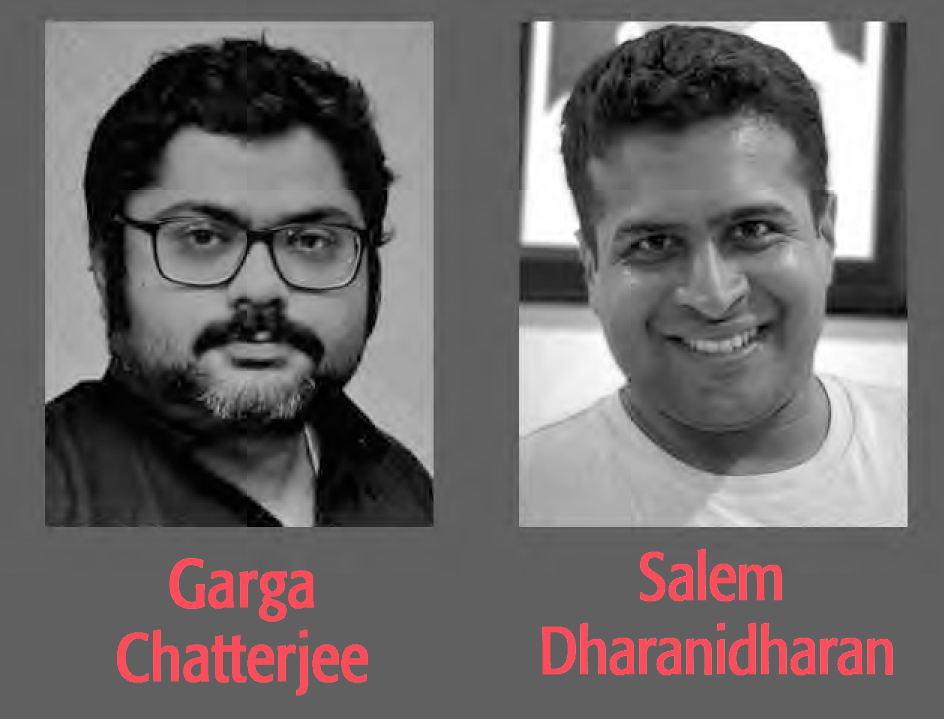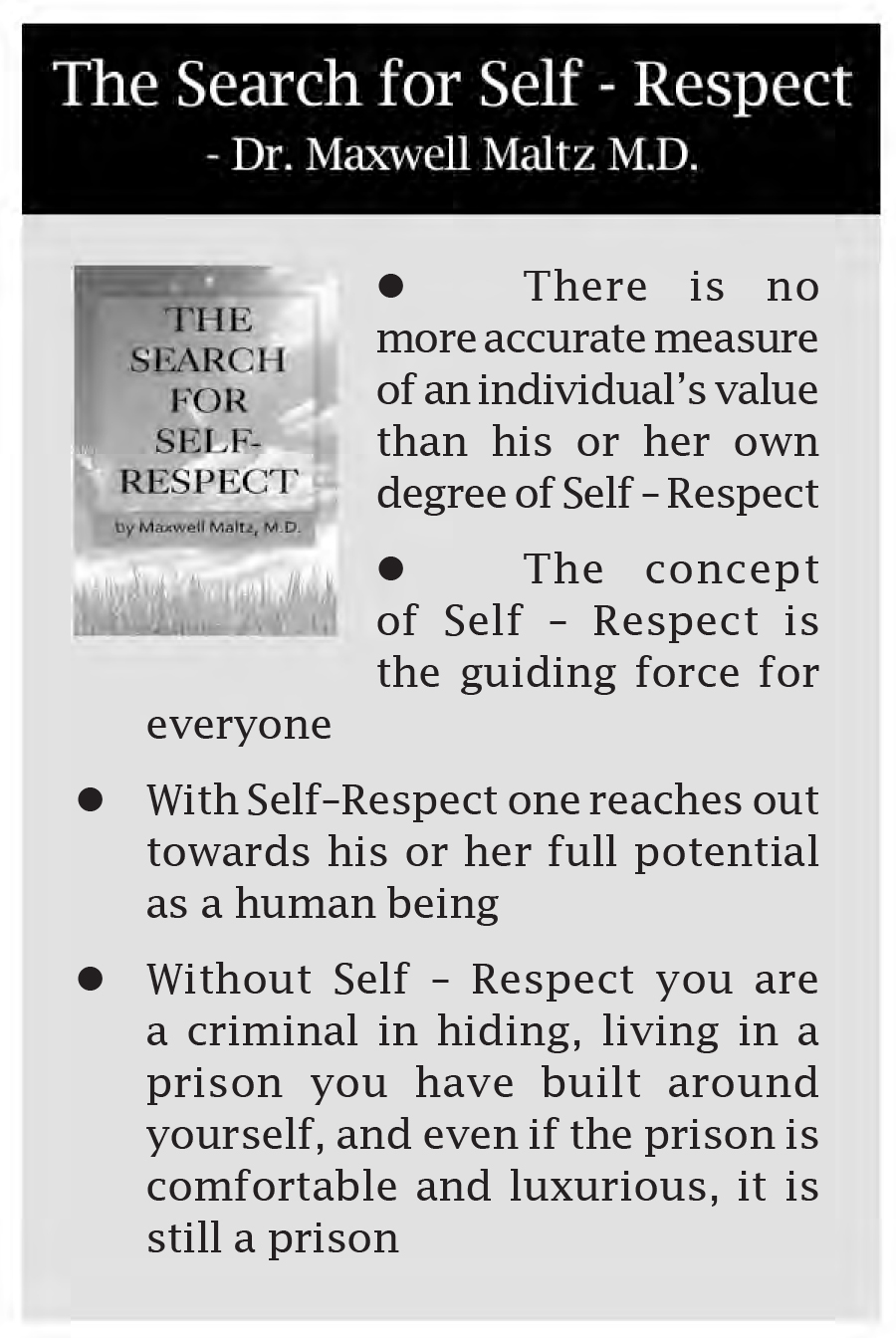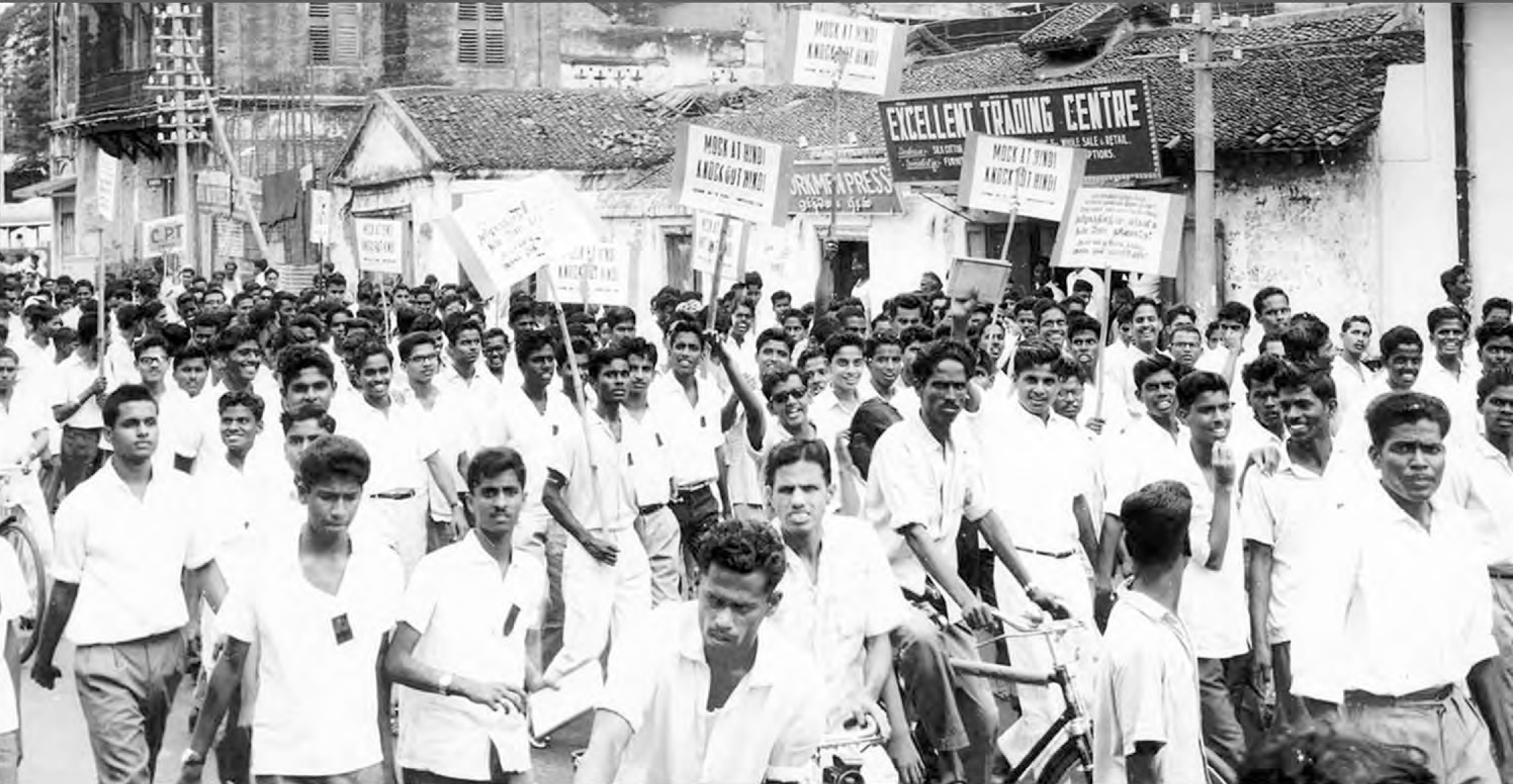The anti-Hindi agitation by college students in Madras in January 1965.The anti-Hindi agitation by college students in Madras in January 1965.Photo Credit: The Hindu Archives

The Indian Union is an agglomeration of ethno-linguistic nationalities that have their own languages and cultures
The debate on Hindi imposition has erupted once again after the Official Language Committee headed by Union Home Minister Amit Shah recommended making Hindi the medium of instruction in central institutes of higher education in Hindi-speaking States. The Committee also proposes that Union government employees be punished for not knowing Hindi, making Hindi practically the sole official language of the Union government. In the past, Mr. Shah suggested that Hindi replace English as the link language, and be made the working language of Union Ministries. Several leaders in the Bharatiya Janata Party (BJP) have called for making Hindi the national language of India.
In the Constituent Assembly, members from Hindi-speaking provinces even claimed that those who don’t know Hindustani (Hindi) had “no right to stay in India”. The language movement in Manbhum district led to the partition of the district between Bihar and West Bengal, and Purulia district was born in 1956. Later, protests broke out in Tamil Nadu against the introduction of Hindi as the sole official language of the Union government. This forced the Union government to amend the Official Languages Act to provide for the use of English until all the non-Hindi-speaking States agreed to drop it.
Discrimination continues
According to the Constitution, there is no national language in India. As per the Eighth Schedule, there are 22 official languages — Tamil for Tamil Nadu, Bangla for West Bengal, Hindi for Uttar Pradesh, Malayalam for Kerala, etc. — with Hindi and English being the official languages of the Union government. This already suggests a fundamental discrimination against the non-Hindi-speaking people because the mother tongue of the Hindi-speaking people is considered for the purposes of the Union but the mother tongues of the non-Hindi-speaking people are not. This makes some Indians more “Indian” than others. The Official Language Committee’s recommendations will deepen this existing discrimination on the basis of language.

The Union government is dependent on the States for its revenue. Non-Hindi-speaking States provide revenue to the Union government which is disproportionately higher than the percentage of the population in these States. Hindi-speaking States survive on the basis of cross-subsidies from non-Hindi-speaking States transferred via the Union government. Even funding for central universities and institutions such as the Indian Institutes of Technology and the All-India Institutes of Medical Sciences is contributed indirectly and disproportionately by non-Hindi-speaking States. It will be a travesty of justice if funds from non-Hindi-speaking States are used to fund the artificial growth of Hindi at the cost of the fundamental rights of non-Hindi-speaking Indians. This imposition of Hindi is a direct assault on federalism and the principle of equal citizenship. Information provided, online or on paper, for recruitment exams to the Army, the Border Security Force, the Central Reserve Police Force, the Staff Selection Commission, etc. is available to Hindi-speaking people in their mother tongue, but the same is denied to non-Hindi-speaking people in their mother languages. The Union government spends 22 times more money on Hindi than it does on Bengali, Tamil or any other language.
Against Hindi imposition
The attempts to impose Hindi have been challenged by non-Hindi-speaking people all over India. The first such protest was organised by Periyar E.V. Ramasamy in Tamil Nadu in August 1937 in opposition to the decision of the C. Rajagopalachari-led Congress regime of making Hindi compulsory in secondary schools. In the Constituent Assembly, members from Hindi-speaking provinces even claimed that those who don’t know Hindustani (Hindi) had “no right to stay in India”. The language movement in Manbhum district led to the partition of the district between Bihar and West Bengal, and Purulia district was born in 1956. Later, protests broke out in Tamil Nadu against the introduction of Hindi as the sole official language of the Union government. This forced the Union government to amend the Official Languages Act to provide for the use of English until all the non-Hindi-speaking States agreed to drop it. The Dravida Munnetra Kazhagam (DMK) has been the most vocal organisation fighting against Hindi imposition. This strong stand has been used by Hindi chauvinists to brand Tamil Nadu as an aberration. However, similar anti-Hindi protests have now arisen in States such as Karnataka, West Bengal, Kerala and Maharashtra.

In the light of the country’s changing demographics, if parliamentary seats are reallocated, it will widen the fiscal disparity between Hindi-speaking and non-Hindi-speaking States. This plan goes hand in hand with the Union government’s continued attacks on State rights.
The boom of India’s service sector as well as the success of the educated Indian diaspora was made possible thanks to the proficiency of Indians in English. The link language of the world is English. India’s beauty and stability lie in its plurality and unity in diversity. Any attempt to destroy this via the imposition of one language will threaten India’s unity. You can either have unity or uniformity; you cannot have both. The Union government must understand that the Indian Union is an agglomeration of ethno-linguistic nationalities that have their own languages and cultures and let them live in peace.



